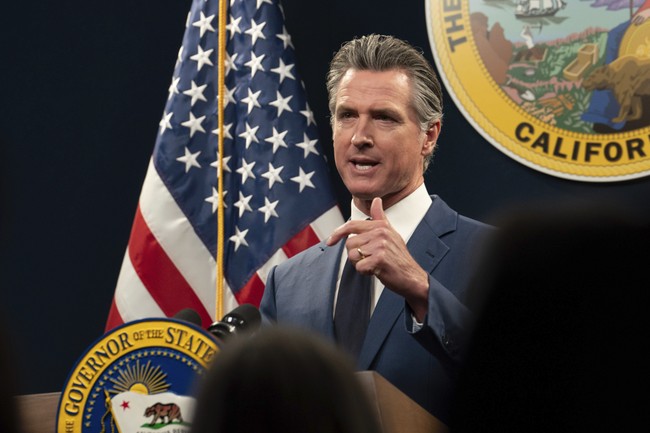UN Security Council's New Ceasefire Plan: A Deep Dive
The UN Security Council has adopted a resolution aimed at ending the prolonged Israel-Hamas conflict in Gaza, but questions remain about its feasibility and the positions of key stakeholders.
Published June 11, 2024 - 00:06am

Image recovered from bostonglobe.com
On Monday, the UN Security Council approved its first resolution endorsing a ceasefire plan aimed at ending the eight-month war between Israel and Hamas in Gaza. This US-sponsored resolution welcomes a ceasefire proposal announced by President Joe Biden, which the United States says Israel has accepted. However, it remains uncertain whether Hamas will agree to the three-phase plan.
The resolution calls upon both parties to fully implement its terms 'without delay and without condition.' US Deputy Ambassador Robert Wood described it as 'the best, most realistic opportunity to bring at least a temporary halt to this war.'
The three-phase plan proposed by the US includes an initial six-month ceasefire, humanitarian aid, the release of hostages, and a full withdrawal of Israeli forces from Gaza. The resolution underscores the importance of ongoing diplomatic efforts by Egypt, Qatar, and the United States to achieve a comprehensive ceasefire deal.
Israeli Prime Minister Benjamin Netanyahu has shown skepticism, insisting that any talk of a permanent ceasefire before dismantling Hamas' military and governing capabilities is a nonstarter. Meanwhile, Hamas leaders have met in Qatar to discuss the proposal, emphasizing that any deal must lead to a permanent ceasefire, Israeli withdrawal, and reconstruction of Gaza.
The first phase of the ceasefire plan requires the safe distribution of humanitarian assistance on a large scale, aiming for 600 trucks with aid entering Gaza every day. The second phase envisions a permanent end to hostilities in exchange for the release of all remaining hostages and a full withdrawal of Israeli forces. The third phase involves a multi-year reconstruction plan for Gaza and the return of the remains of any deceased hostages.
US Secretary of State Antony Blinken has been actively involved, making his eighth trip to the Middle East since the conflict began. He met with Israeli officials to discuss the plan, urging both parties to accept it. Blinken emphasized that the plan has wide international support, but also faced challenges from internal Israeli politics and skepticism from Hamas.
The resolution, if fully implemented, hopes to restore peace in a region devastated by constant conflict. The Security Council's unanimous support, except for Russia's abstention, reflects a global consensus on the urgent need for resolution. However, the actual impact of the resolution remains uncertain as both sides have deep-rooted conditions.
In parallel, there are reports about the US considering unilateral negotiations with Hamas to secure the release of American hostages. Such a move could strain US-Israel relations further. Critics argue that it could embolden Hamas and undermine Israeli efforts to neutralize the group.
The path to peace in the Israel-Hamas conflict remains fraught with complexity, requiring sustained diplomatic efforts and substantial concessions from both sides. The international community is keenly watching to see if this ceasefire plan can pave the way for lasting peace or if it will falter under the weight of long-standing animosities.
On Monday, the UN Security Council approved its first resolution endorsing a ceasefire plan aimed at ending the eight-month war between Israel and Hamas in Gaza. This US-sponsored resolution welcomes a ceasefire proposal announced by President Joe Biden, which the United States says Israel has accepted. However, it remains uncertain whether Hamas will agree to the three-phase plan.
The resolution calls upon both parties to fully implement its terms 'without delay and without condition.' US Deputy Ambassador Robert Wood described it as 'the best, most realistic opportunity to bring at least a temporary halt to this war.'
The three-phase plan proposed by the US includes an initial six-month ceasefire, humanitarian aid, the release of hostages, and a full withdrawal of Israeli forces from Gaza. The resolution underscores the importance of ongoing diplomatic efforts by Egypt, Qatar, and the United States to achieve a comprehensive ceasefire deal.
Israeli Prime Minister Benjamin Netanyahu has shown skepticism, insisting that any talk of a permanent ceasefire before dismantling Hamas' military and governing capabilities is a nonstarter. Meanwhile, Hamas leaders have met in Qatar to discuss the proposal, emphasizing that any deal must lead to a permanent ceasefire, Israeli withdrawal, and reconstruction of Gaza.
The first phase of the ceasefire plan requires the safe distribution of humanitarian assistance on a large scale, aiming for 600 trucks with aid entering Gaza every day. The second phase envisions a permanent end to hostilities in exchange for the release of all remaining hostages and a full withdrawal of Israeli forces. The third phase involves a multi-year reconstruction plan for Gaza and the return of the remains of any deceased hostages.
US Secretary of State Antony Blinken has been actively involved, making his eighth trip to the Middle East since the conflict began. He met with Israeli officials to discuss the plan, urging both parties to accept it. Blinken emphasized that the plan has wide international support, but also faced challenges from internal Israeli politics and skepticism from Hamas.
The resolution, if fully implemented, hopes to restore peace in a region devastated by constant conflict. The Security Council's unanimous support, except for Russia's abstention, reflects a global consensus on the urgent need for resolution. However, the actual impact of the resolution remains uncertain as both sides have deep-rooted conditions.
In parallel, there are reports about the US considering unilateral negotiations with Hamas to secure the release of American hostages. Such a move could strain US-Israel relations further. Critics argue that it could embolden Hamas and undermine Israeli efforts to neutralize the group.
The path to peace in the Israel-Hamas conflict remains fraught with complexity, requiring sustained diplomatic efforts and substantial concessions from both sides. The international community is keenly watching to see if this ceasefire plan can pave the way for lasting peace or if it will falter under the weight of long-standing animosities.
Meanwhile, humanitarian organizations are preparing for the operational challenges of delivering aid under the proposed ceasefire conditions. The influx of aid and resources, while necessary, also risks being exploited by militants if not carefully monitored. International monitoring agencies have highlighted the importance of ensuring that aid reaches the intended civilian populations in Gaza without being diverted for military uses.
As debates continue at the UN, regional actors such as Egypt and Qatar position themselves as key mediators, leveraging their influence with both sides to push for compliance and cooperation. Egyptian President Abdel Fattah el-Sisi has expressed optimism about the potential for the plan's success, citing Egypt's historical role in mediating previous ceasefire agreements. Similarly, Qatar's Emir Sheikh Tamim bin Hamad al-Thani has been in direct contact with Hamas leadership to encourage their support for the US-led initiative.
On the diplomatic front, European Union leaders have voiced their support for the resolution, with the EU's foreign policy chief, Josep Borrell, stating that a peaceful resolution to the conflict aligns with EU interests in regional stability. Borrell also emphasized the need for a sustainable peace process that addresses the underlying issues of the conflict, including the blockade of Gaza and the political status of the Palestinian territories.
Moreover, the economic ramifications of the ongoing conflict and the potential costs of reconstruction are significant. International financial institutions, including the World Bank and the International Monetary Fund, have indicated readiness to support Gaza's economic recovery and development, contingent on the successful implementation of the ceasefire plan and a stable security environment.
Finally, analysts caution that while the UN resolution is a critical step forward, it is not a panacea for the longstanding conflict. The resolution's success will depend on the political will and cooperation of both Israel and Hamas, as well as the sustained commitment of the international community to support and monitor the implementation of the ceasefire agreement. Only time will tell if this diplomatic effort can transform the fragile ceasefire into a lasting peace.






